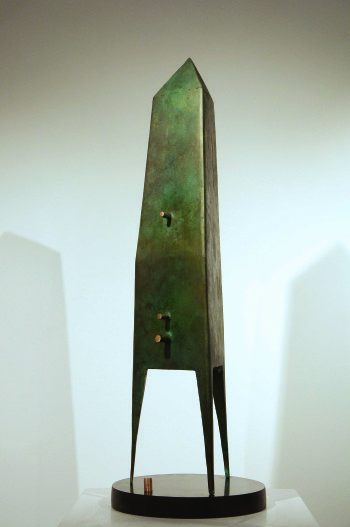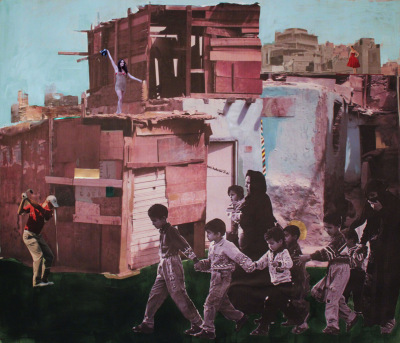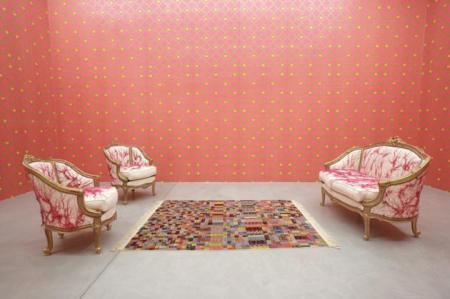Sean Jacobs's Blog, page 575
January 19, 2012
'Support unborn African babies'
A Belgian organization (backed by a smart advertising agency) "is calling on unborn babies in Belgium, to do something about the thousands of unborn babies in Africa that do not survive their own birth." They're stretching it a bit with the geographical focus since the raised funds will go to hospitals in Togo, if we're to believe the campaign's video. Pregnant Belgian mothers "have been recruited to use the in utero movements of their unborn children to paint pictures." You can bid on the works afterwards. Alternatively, ordering an 'unborn artist' do-it-yourself kit will work: 10 Euros a pack will get your unborn started and support an African.
We can never start too young, can we?

The 'Shit Nigerians Say' video
EDITED: I promised myself we won't post any of the "Shit People Say" videos–the best ones I've seen: Shit Girls Say; Shit Sri Lankan Mothers Say and Shit White Girls Say … To Black Girls. Others are too stupid, too clever or outlandish; there's even a "Shit Birds Say." The best takedown of the trend is here. Anyway, yesterday I went looking to see if there any done by Africans. There's of course a few online, but not much to like, though I found the "Shit Nigerians Say" video posted on Youtube, embedded above, quite funny.

January 18, 2012
#OccupyNigeria Music N°2
Aduke is the latest artist to boost #OccupyNigeria, a movement that is transforming Nigeria's otherwise elite driven politics for the better. (BTW, we have been amazed at the regularity and speed by which these music videos–of decent quality–are coming out. In the same way we are struck by the good video journalism, like that of Chop Cassava, something absent in the citizen reporting of #Occupy movements in countries south of the Sahara.)
H/T: Naijablog.

#OccupyNigeria Music
Aduke is the latest artist to boost #OccupyNigeria, a movement that is transforming Nigeria's otherwise elite driven politics for the better. (BTW, we have been amazed at the regularity and speed by which these music videos–of decent quality–are coming out.)
H/T: Naijablog.

"Belgian unborn babies support African unborn babies"
A Belgian organization (backed by a smart advertising agency) "is calling on unborn babies in Belgium, to do something about the thousands of unborn babies in Africa that do not survive their own birth." They're stretching it a bit since the raised funds will go to hospitals in Togo, if we're to believe the campaign's video. Pregnant Belgian mothers "have been recruited to use the in utero movements of their unborn children to paint pictures." You can bid on the works afterwards. Alternatively, ordering an 'unborn artist' do-it-yourself kit will work too. €10 a pack will get your unborn started and support an African.
We can never start too young, can we?

The Real Housewives of Atlanta Go To Africa
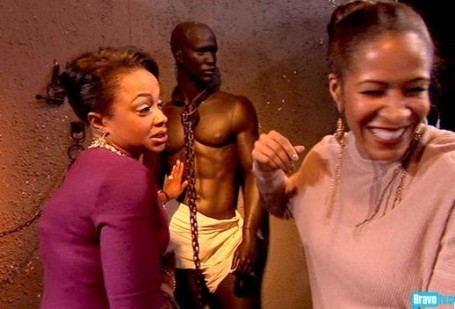
It's too bad that America sees Atlanta, black women, and maybe even women in general through the lens of The 'Real Housewives' franchise. When the first episodes of Atlanta aired, my upstate New York hairstylist gasped and gawped about the wealth and glam. To paraphrase her: Oh, the hair! the really short dresses! (and the token white girl!) I had to reply, with that special brand of irony that educators cultivate: "Lovey, I think you've probably never seen rich black women before." So I did my part to defend the Atlanta women.
But now, they are planning a trip to South Africa (free, of course). This week was the prep episode, including one of them calling the president of Ghana for advice for a trip to South Africa. (Serious.)
Here's a bit of recap from Entertainment Weekly:
Phaedra is the new Countess (just one with a sense of humor and rhythm). She's organizing a trip to South Africa for the women and she wants everyone to come. ("I wouldn't go to the damn trash can with them," NeNe sniffed to Cynthia. They haven't told her yet the trip is free.) In preparation, Phaedra dragged Kandi's enormous thighs to an African dance class. "When I think of Africa, I just think of…" said Kandi. "Naked women with their breasts out," Phaedra cut in, handling her chest. "Jangy jangy jangy jangy!"
Phaedra and Kandi took part in a joyous African dance class so Kandi can lose some weight.
(So nice that African traditions, too, are now getting used for weight loss and body obsession, much like yoga—a practice meant to help us go of our attachment to our transient physical selves—has been adopted by OCD white women throughout the US to further draw attention to their physical and sexual selves).
But there's even more:
Phaedra Parks (or the producers) also use this episode to teach audiences a little about the continent the ladies are about to visit, and so that she can "immerse herself in culture". Parks takes Kandi to the Apex Museum, an Atlanta-based history museum about the African-American history. The pair then giggle over a "pec-tastic" slave statue and Sheree peeks under the loincloth, rather than paying attention to the tour guide.
Kandi can't come up with one adjective to describe what she thinks when she hears "Africa." Phaedra, however, is not at a loss for descriptions: Africa is, in the mighty Atlantan's hands, the location of "naked women with their breasts out."
Finally, Sheree, too, is invited to go to South Africa. "I would not pass up the experience," Sheree delights. "We can put our grown panties on." Phaedra's response: "Hopefully, Africa will elevate us to college-level fights."
NeNe, sadly, will not be going to Africa, despite the temptations of loincloths, "grown panties", and the opportunity to elevate fights to the "college-level". Reuters.com tells us:
[NeNe] told Cynthia she wouldn't go to a trashcan with them. Prompting Sheree's only real contribution to this episode, "I don't think the b**** has ever been abroad. I don't think she has any stamps on her passport. Get some damn culture!"
Indeed.
Oh, South Africa. I'm sorry that this is what you had coming.
The episode airs next week.

Busted Rhymes
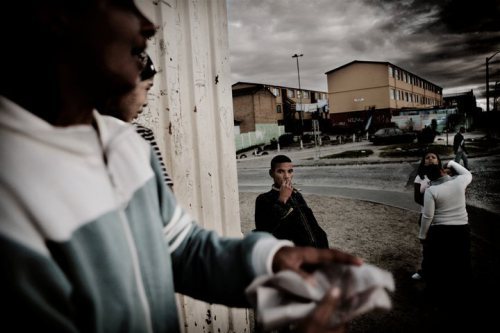
Gebaste Rhymes sent us a link to his single 'Kaap issie Bom' [translated: Cape is the Bomb], the first single off One Day Vol. 1. The full album (or audio hip-hopumentary) will be out later in 2012 and "forms part of a larger alternative education initiative." Gebaste Rhymes describes himself as "a Cape born artist whose audacious style matches his name" and explains that "the song captures a distinctly Cape sense of humour while producer Hybrit Pettens and DJ e-20 laces it with that classic boombap sound." We have a suspicion who Gebaste Rhymes is. Take a listen.
* Still image from the new documentary film "Manenberg"

January in Cairo III


Countless languid women – abstract and figurative, sensual and monumental, modern and mythological – hang under the high-ceilings of a dustry building which resembles a recently deceased bank. This is Ibrahim Abd El-Rahman's extensive collection of Egyptian paintings (I mentioned his gallery in my previous post on art in Cairo). Of these, perhaps the most striking are Ibrahim El Dessouki's elegant portraits (often of his wife, also a painter), which tempt comparison with Modigliani and Klimt. This collection of female forms – abstract and figurative, sensual and monumental – suggest certain trends in Egyptian painting and the nature of its buyers.
At Art Corner, a newish gallery in a Zamalek shop, two ink drawings lean casually against a wall. These are, I am told, the work of a French artist Paul Beanti, who came to paint the revolution and was arrested in Tahrir Square. The drawings give his account of arrest, attempted humiliation, striking back with satirical anger. The woman watching the gallery absent-mindedly whilst stringing a set of glass beads, goes to fetch one of Beanti's paintings from the storeroom. When she returns, and the painting is removed from its bubblewrap, the exposed painting strikes me more than any of the other artists' paintings on the walls: a composition in bright swathes of roughly applied orange, purple and yellow, the head of a sphinx emerges from within a haze of what looks like marker pen. The artist used sand and soil to give his work its roughness. The work made during his stay suggests he viewed his role as a foreign artist in residence in Cairo as that of agent provocateur (an interview in al-Ahram dutifully mentions that the artist's main fascination – in his own [admittedly circumcised] genitalia – makes his work unacceptable in Egypt). These paintings look naked, aggressively so, insistently naïve. I wonder what art this revolution really needs.
In the Misr Gallery, a group show collects recent works of Egyptian sculpture: objects in bronze, nickel and marble. The elegance and simplicity of the room immediately calls to mind earlier European counterparts, Brancusi and Giacometti. The work of Khaled Zaki and Salah Hamid appear similar responses to recent events. Zaki, who works in Italy, contributes 'Sitting Patriot' to the show.
The head of this figure is marble, and the contrast between this humble (tortured?) figure and the eminent and supercilious faces usually incarnated in marble, suggest a careful and empathetic response to recent images of Egyptian civil violence. But it is the loins of this sculpture, and Hamid's 'Uprising' (below), with their stylised (castrated?) genitalia, three identical cubes, which gives the work its especial anger. These works lack the quickness of paint's criticism but quietly make an interesting argument about the perpetual dangers of making monuments to the Egyptian body in pain.
Atef Ahmed's collages demonstrate recent thinking into the police presence on the streets. Menna Genedy, director of the Misr Gallery and an artist in her own right, has recently encountered similar problems. She lives near the Ministry of the Interior and is, she says, regularly "suffering from their looks". Her images have the same peculiar affinity with and antipathy towards advertising as Richard Hamilton's collages of the 1960's.
Genedy's mixed media work work as visual social commentary, gathering the country's self-celebrating billboards ('Egypt is the Land of Civilization') with images of its self-harm, bringing a photographed group of impoverished children onto the golfing greens of a holiday brochure. Marwa El-Shazly's vivid collages include images of a goose settling on Mubarak's head, X-Rays coming out of politician's eyes, political satire with science fiction's self-confidence, ruthlessly desecrating the images of a debased political reality. Figures of Obama and Gaddafi adorned with Grace Jones and Donald Duck: it's all the same to us. There seems to be a silent accord between these satirists: Ghada Amer's 2007 work 'Le Salon Courbé' (below) has the same uncanny fascination with bloodied furniture as Essam Marouf (see his faceless phantasmic paintings here).
The women in Egyptian art are no longer mere painted subjects, but active, even aggressive, players. Amer's recent works include a series of paintings of masturbating women, overlain with kitsch patterns. Another Egyptian artist, Nadine Hammam, has been mapping out the points of contact between the gaze and the female body and the destruction of subjectivity which that might involve. The French novelist, Pierre Guytot, commended this kind of art: "Pornography is certainly more beautiful than eroticism … Eroticism is ugly. Eroticism is an ideology… there is nothing more boring than eroticism, it's worse than poetry, even. I say three cheers for pornography." There is perhaps a similar distinction to be made between the modern women of Ibrahim Abd El-Rahman and this new generation of artists, making work which is unsaleable in Egyptian galleries, and threatened by the probable domination of the next government by Muslim Brotherhood and Salafist affiliates. To quote Mahmoud Amer again: "What is this art of yours? The art of lesbians? The art of prostitutes?" Hammam's recent work 'The Girl With the Whole in her Heart' answers boldly in the affirmative. Pornography may be a revolutionary art. These artists are making dangerous excursions around the borders of social acceptability, simple gestures which demand freedom of expression for artists and women.

What happens to women in "villagization"? Don't ask the news media
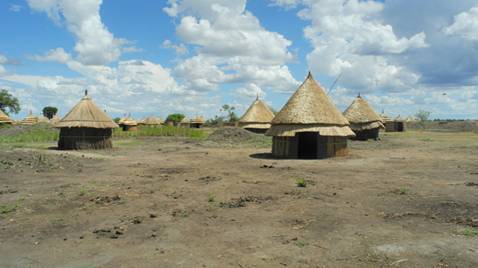
On Monday, Human Rights Watch released a major report: 'Waiting Here for Death': Forced Displacement and 'Villagization' in Ethiopia's Gambella Region. Villagization is "the clustering of agropastoral and/or shifting cultivator populations into more permanent, sedentary settlements." It's rural gentrification, in which vulnerable populations are forcibly relocated, often at gunpoint and never with any consultation, so that the land might become 'more productive.' Gambella is the westernmost part of Ethiopia, the part that juts into South Sudan. It's just finishing the first of a three year villagization program that, 'if all goes well', will forcibly remove whole swaths of semi-nomadic, indigenous Nuer and Anuak people and communities.
In the past three years, Ethiopia has leased out an area of land that is about the size of the Netherlands. And there's more to come. A lot more.
So, the Nuer and the Anuak are moved to 'new' and 'modern' villages, where there's little to no food, farmland, healthcare, or educational facilities. Ultimately, the plans are for 70,000 to be removed, out of a population of some 300,000. The larger plans are to move 1,500,000 people from four regions by the end of next year.
The story has all the major players: foreign donors, the Ethiopian government, foreign and domestic investors, and rural and indigenous populations. The story's been picked up by the Associated Press, Bloomberg, the Guardian, the BBC, the Telegraph, Global Post, the Voice of America, Reuters, Le Monde, to name a few.
What happens to women in villagization? Don't ask the news media. Some show women in pictures, but none report.
The Human Rights Watch report, on the other hand, does give some answers.
First, when people realize that the new villages are without infrastructure or food, the men try to return to their old farms, or run off and hide in the bush and then on to South Sudan, or, if they can, to the refugee camps in Kenya. This leaves behind women, children, the sick and the elderly. That is, the daily labors of women increase exponentially. That labor is further increased by the poverty of education and healthcare services, meaning more care of children, the sick and the elderly falls to women every minute of every day.
Women's work increases, women's vulnerability intensifies.
The villages are surrounded and populated by the soldiers who brought the Nuer and Anuak to their new 'homes'. First, the men disappear. Second, there is little available water, and so the women are walking, often alone, great distances to fetch water. Women have reported at least 20 rapes in the past year, and most of them were multiple rapes, involving more than one soldier.
After the construction was completed, the soldiers moved on. They are reported to have taken seven girls as 'wives'. As of yet, none of those girls has returned to their families.
There are no services for survivors of sexual violence in the new villages. Welcome home.
At every step, the story of villagization is particularly a women's story… unless of course you read the news reports.

January 17, 2012
Music Break. LeslyMan

"What do they really know about us?" Fair question from Congolese artist LeslyMan. He could have added: do they still want to know about us now that the elections are over? Remember LeslyMan from last year's collaboration with Lexxus.

Sean Jacobs's Blog
- Sean Jacobs's profile
- 4 followers





